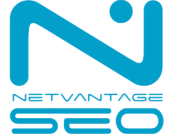Google’s algorithms play a pivotal role in shaping online content strategies and everyone’s approach to SEO. Google’s (fairly) recent Helpful Content Update stands out as a significant shift towards prioritizing people-first content. The rollout for this update began in September of 2023 to enhance the quality of information available online, this update aims to reward content that offers genuine value to readers, setting a new standard for content creators and SEO professionals alike. This change underscores the importance of crafting content that fulfills the needs and interests of real people, rather than merely optimizing for search engine algorithms.
Historical Context
Google’s algorithm updates have historically aimed to refine search results, making them more relevant and valuable to users. The Panda Update, for instance, was a game-changer in penalizing low-quality, thin content. Fast forward to the Helpful Content Update, and we see Google taking another significant leap. This update builds on the foundation laid by Panda, focusing not just on the quality of content but also on its relevance and helpfulness to the audience. For a detailed look into the evolution of Google’s updates, visit Google’s Official Blog on the Helpful Content Update.
Core Principles of the Helpful Content Update
At the heart of the Helpful Content Update is the concept of people-first content. This philosophy encourages content creators to produce material that genuinely interests and benefits their audience, beyond mere SEO tactics. Google outlines several guidelines for this, emphasizing the creation of content that readers find satisfying and informative. Content should:
- Reflect first-hand expertise and a deep understanding of the subject matter.
- Be intended for an audience that would find it directly useful, not just designed to attract search engine traffic.
By urging creators to focus on the needs and experiences of their readers, Google aims to foster a richer, more user-centric web ecosystem. For more insights into creating people-first content, consider exploring A Guide to EAT and Its Importance in your content strategy.
How the Update Works
The mechanics of the Helpful Content Update are fascinating, utilizing advanced machine learning to assess the value and user-focus of web content across the globe. This update introduces a site-wide signal that identifies content crafted primarily for search engines, demoting it in search rankings. Simultaneously, it rewards content that appears to be created with a genuine intent to help users, enriching their online experience.
This dual approach has several implications:
- Sites offering rich, engaging content that addresses user queries effectively are likely to see an improvement in their search rankings.
- Conversely, sites with content that fails to provide real value or satisfy user needs could experience a decline.
The update’s emphasis on user engagement metrics further underscores the shift towards people-first content. Metrics such as time spent on page and bounce rates now play a critical role in content evaluation, pushing creators to focus on the quality and relevance of their offerings. By aligning content strategies with these principles, creators can navigate the changes brought by the Helpful Content Update, ensuring their sites remain competitive and valuable to their audience.
The introduction of the Helpful Content Update marks a pivotal moment in content creation and search engine optimization. It underscores the importance of prioritizing the needs and experiences of users, encouraging a more thoughtful, user-focused approach to content. As we continue to adapt to these changes, the principles outlined by this update offer a valuable roadmap for creating content that not only ranks well but truly enriches the web.
Implementing and Adapting to the Google Helpful Content Update
When adapting to the Google Helpful Content Update, it’s crucial to steer clear of practices that could undermine your efforts to align with Google’s people-first content philosophy. Two common pitfalls include:
- Keyword Stuffing: Overloading content with keywords in an attempt to manipulate search engine rankings can lead to penalties from Google. This practice not only diminishes the readability and quality of content but also signals to Google that the content is designed more for search engines than for providing value to users.
- Plagiarism: Copying content from other sources without proper attribution not only raises ethical concerns but also attracts penalties from search engines. Originality in content creation is a key factor in gaining the trust of both users and search engines.
Moreover, websites that are difficult to navigate or fail to provide clear, useful information are likely to be negatively impacted by the update. For content creators, the emphasis should always be on quality, relevance, and user experience.

Strategies for Writing High-Quality Content
The essence of adapting to the Helpful Content Update lies in the ability to produce high-quality, engaging content that serves the needs and interests of your audience. Here are strategies to ensure your content meets these standards:
Do Your Research: Understanding what your audience is searching for, their questions, and their challenges is foundational. Tailor your content to address these needs directly, providing comprehensive, in-depth insights that genuinely help your readers.
Keep It Clear and Engaging: Clarity is paramount. Avoid industry jargon and complex language that could alienate your readers. Engage them with a compelling narrative, useful information, and actionable advice that keeps them interested and encourages them to explore your content further.
Adjusting SEO Strategies
In the wake of the Helpful Content Update, adjusting your SEO strategies is imperative to ensure your content continues to perform well. Focus on creating original, in-depth content that provides unique value to your audience. Here are a few tips:
- Emphasize Quality Over Quantity: Google’s algorithms are increasingly adept at evaluating the quality of content. Focus on producing well-researched, well-written articles that offer new insights or helpful information.
- Adapt Content for Google’s EAT Criteria: Ensure your content demonstrates Expertise, Authoritativeness, and Trustworthiness, especially in niches that impact people’s health, finances, or safety. Highlighting the qualifications of content creators and providing evidence to support your claims can bolster your content’s credibility.
Succeeding in an online landscape ruled by the Google Helpful Content Update requires a thoughtful approach to content creation that prioritizes the needs and experiences of users. By avoiding common pitfalls, focusing on creating high-quality, engaging content, and adjusting your SEO strategies accordingly, you can ensure your content not only complies with Google’s guidelines but also stands out in a crowded digital landscape.
The shift towards people-first content represents an opportunity for content creators to refine their practices and contribute to a more informative, useful, and user-friendly web.

Leave a Reply